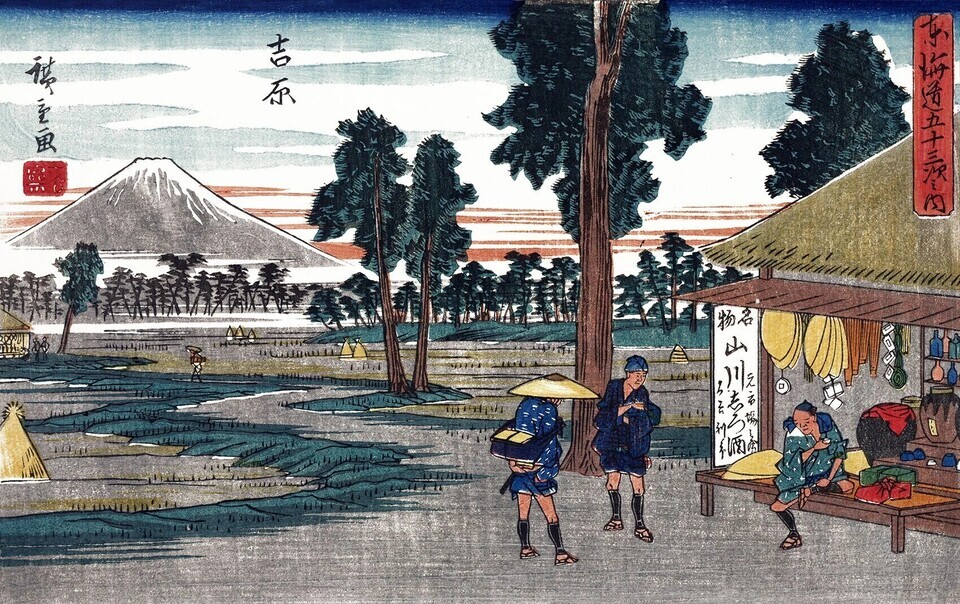TRADITIONAL JAPANESE KNIFE BUYING GUIDE
Japanese kitchen knives have become popular among both professional and amateur chefs around the world. Their extremely sharp, thin and lightweight blades make food preparation easier and more enjoyable. But how do you choose the best Japanese kitchen knife? Which knife is best for you depends on many different factors: your skill level, the style of the knife (traditional - single blade or double blade), what you will be cutting with the knife and how much money you are willing to spend on the knife, and other preferences. You can choose from different types of Japanese knives that are designed to prepare a specific type of food (e.g. fish, vegetables) or you can decide to buy Japanese knives that are designed to prepare multiple types of food. In this buying guide, you will find the main factors that are good to consider before buying Japanese kitchen knives.
Japanese knives differ in steel and therefore in price. Some knives are made of high-carbon steel (blue steel or white steel), which is harder and can hold a sharp edge for longer. These knives require proper maintenance and regular sharpening. For this reason, high-carbon steel knives are recommended only for professionals and, due to the material, usually have a higher price.
Japanese knives are made of a stainless steel alloy, which is more durable, easier to maintain and resistant to rust. The disadvantage is that these knives do not stay sharp for as long as high-carbon steel knives and are therefore not the most suitable for professional use. They are mainly intended for everyday home use. This will enrich your kitchen with an extremely high-quality knife that you will be happy to use to prepare food.
Blade style
Japanese knives have either a double blade (the Western style of knives that we all have at home) or a single blade (the traditional Japanese style). Single-blade knives (a blade on one side only) are generally intended for professional chefs, as they can make very precise cuts, or have very specific uses (e.g. sushi knives). The feel of a single-blade knife is very different, and it takes a lot of practice to get used to it. If you are not a professional chef, we recommend starting with a double-blade knife, as it is easier to use.
Type of Knife
For each blade style (i.e. Western/European or traditional), there are many types of knives. Many of these knife types have a specific use (vegetables only, fish, carving, etc.), but there are two Japanese knives that are intended for general use — the Gyuto (Japanese chef's knife) and the Santoku. Both knives have Western-style blades (double-bladed) and are known as multipurpose knives, as they can be used for vegetables, meat, or fish.
For beginners who have never used a Japanese knife, we recommend starting with a Gyuto or Santoku knife, then progressing to discover quality Japanese knives. Gyuto knives usually have longer blades (20 to 25cm) than Santoku (15 to 18cm). If you generally work in smaller spaces, then it is a good idea to consider a Santoku knife.
The last thing to consider is the type of handle. Japanese knives can be equipped with a handle similar to that of European knives (Western style) or a traditional Japanese handle. Western handles are heavier, with a shaped grip, the user feels more secure, and are better suited for cutting raw ingredients. Traditional Japanese handles are cylindrical, lighter, and always made of wood. Traditional Japanese-style handles can seem awkward to those who have never used them before, but they provide a more sensitive touch and control once you get used to the feel. Ultimately, the choice of handle type depends on your personal preference.
After buying and using the first knife that impresses you, you will be interested in discovering other Japanese knives that are suitable for vegetables, fish, meat, steaks and sushi. Food is significantly less damaged when cut with Japanese knives and retains most of its juiciness, all of which will enrich the preparation and the taste of the food. Cutting meat or fish becomes easier, the cuts are clean and smooth, so you will definitely enjoy preparing food.
Posted: Wed 20 Aug 2025
